D Sharp or E Flat on Guitar: Chord Shapes, Major Scale, Songs in the Key of D Sharp or E Flat
Author: Wanda Waterman
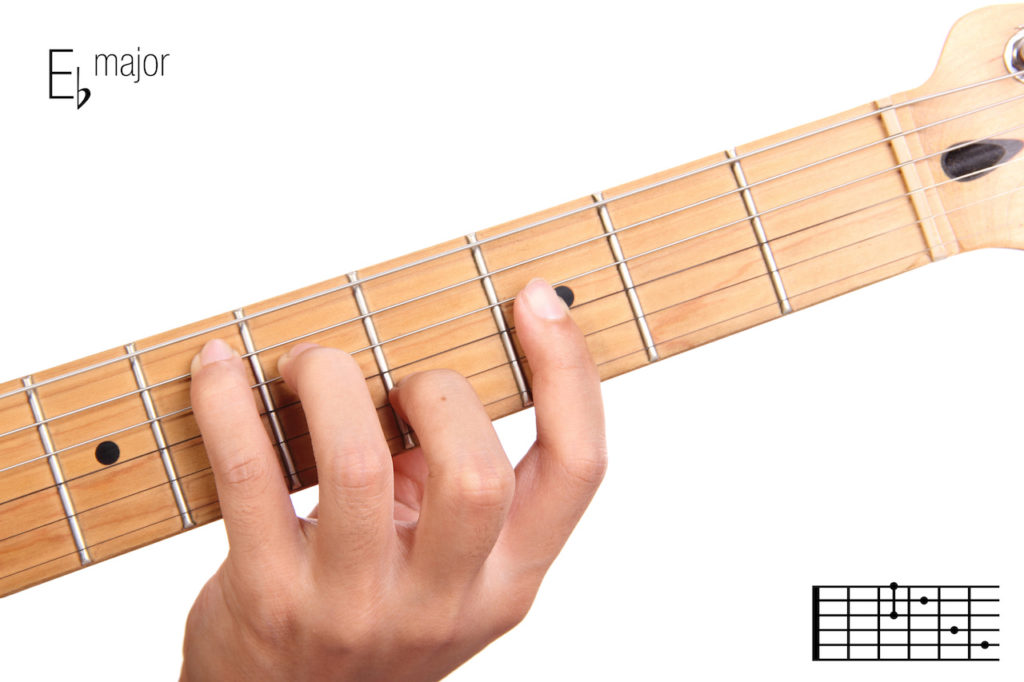
Table of Contents
D Sharp or E Flat Major History Lesson: All Love and Glory
Welcome to a new episode in our “Chord of the Week” series, where we share a new guitar chord, explore its history and relevance, talk about how it’s played on the guitar, and enjoy a few popular songs and chord progressions in the key of its major scale.
Today we’re bringing you the D# / Eb chord and the key of D sharp/E flat. This key’s majestic sound makes it a great key for songs about triumph and overcoming life’s toughest obstacles!
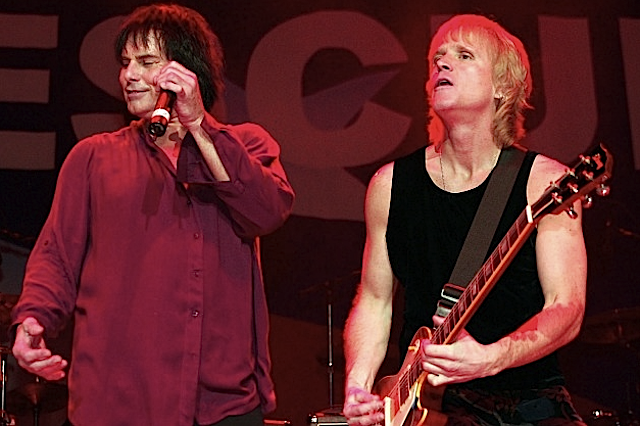
(Looking for an introductory explanation of about major scales and how they work? Read this.)
If you haven’t been following this series, you’re probably wondering why in the heck we’re giving this key two names, and even two different key signatures, so it looks like we’ve got some explaining to do . . .
“Some composers thought of Eb major as the key of loving devotion for God. Mozart connected the key with Freemasonry, pointing to its religious nature. Other composers thought of it as a heroic key. But don’t stop there; Eb’s singability makes it a favourite of pop and rock songwriters as well.“
Enharmonic Equivalents
Last week we introduced a new concept in music theory— enharmonic equivalents. This is a term used to describe two keys that sound exactly the same but that have different names and different key signatures.
It’s simpler than it looks. You probably already know, for example, that there’s only one note— a half-tone— between D and E and that this note can be called either D# or Eb, depending on which key you’re in.
It’s the same for keys: The same key can be called D# or Eb, depending on the composer’s choice of notation.
Most composers and songwriters prefer to use the notation with the least number of accidentals (for one thing, it keeps the musicians from griping), which explains why most composers notate this key as E flat as opposed to D sharp: D sharp has six accidentals (sharps) whereas the key of E flat has only three accidentals— three flats.
Gustav Holst (photo below) composed his magnificent “Jupiter” section of The Planets in the key of E flat major.
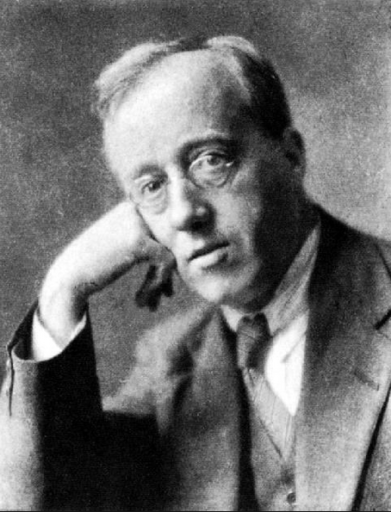 Because the Eb name and notation are the easiest and most common, this is how we’ll refer to this key for the rest of this article.
Because the Eb name and notation are the easiest and most common, this is how we’ll refer to this key for the rest of this article.
Eb is often thought of as the key of heroic bombast, and not just because Beethoven’s Eroica Symphony and Emperor Concerto were written in this key. Mozart and Richard Strauss also wrote important works in this key (Strauss’s Eb work is aptly named A Hero’s Life), and how could you get more majestically heroic than the “Jupiter” movement of Gustav Holst’s The Planets?
Richard Strauss wrote his aptly named A Hero’s Life in the key of E flat.
Some composers thought of Eb major as the key of loving devotion for God. Mozart connected the key with Freemasonry, pointing to its religious nature.
But don’t stop there. Eb’s singability makes it a favourite of pop and rock songwriters as well.
The Eb Major Chord Position on the Guitar: Bar or Capo— Your Choice
!function(e,r,d){var t,c=e.getElementsByTagName(r)[0];e.getElementById(d)||(t=e.createElement(r),t.id=d,t.src=”https://uberchord-backend.firebaseapp.com/uberchord-embed-sdk.js”,c.parentNode.insertBefore(t,c))}(document,”script”,”uberchord-jssdk”);
Look carefully at the above diagram and you’ll see the basic D chord shape in it. This is because Eb— and the chord built on it— is just one half tone above D. This may not seem like such a big deal until you realise that to play a song in the key of Eb you can either play the above chord or just put on a capo at the first fret and play D chord formations!
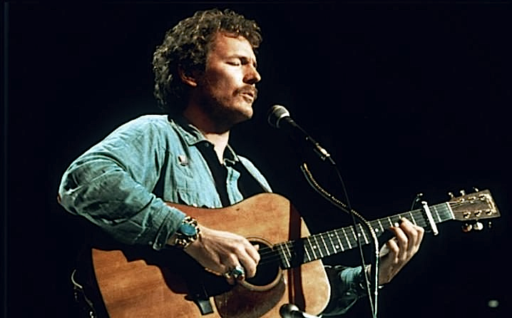
Legendary folksinger Gordon Lightfoot, who has advanced musical knowledge, once admitted that he now plays mostly D formations with a capo at different frets. This is because the suspended 4th chords and major 7th chords he plays work best in the D chord formations (more on suspended 4th chords and major 7th chords in an upcoming article!).
If you want to tackle this chord as it is in its basic bar chord form, we’re 100% behind you! Any chord can be played if you practise it long enough, and our Uberchord app can shorten the duration of practice needed by letting you know exactly what you can do to improve your sound.
Later on, when you find yourself having to play progressions of chords that are hard to move back and forth between, you can program in the progressions themselves and get helpful feedback. (See our blog for five great tips on how to learn new chords more easily.)
Theory and Practice: The Pattern of the Eb Major Scale Explained
If you’ve already got some music theory under your belt (if you don’t, here’s a great place to start) you’ll know that the tones in a major key go like this:
whole tone, whole tone, half tone, whole tone, whole tone, whole tone, half-tone
In other words, at the third and the seventh positions in the scale there’s a half tone, and between all the other notes there are whole tones. All major keys follow this pattern, so if you ever want to figure out the accidentals for yourself, just start with the root note and count off the above pattern.
This means that the scale of the key of Eb major is made up of Eb, F, G, Ab, Bb, C, and D.

Voilà— the Eb major scale, with Eb at its root and another Eb, an octave higher, at its pinnacle.
(By the way, playing scales on your guitar is a whole lot easier after you memorise your guitar’s fretboard notes. Get started by reading this.)
The Eb major chord, which forms the root of the Eb major scale, is made up of the notes Eb, G, and Bb— the first, third, and fifth notes of the key of Eb major. On the guitar, using the basic Eb chord position shown in the diagram above, these notes arrive in this order: Mute, Eb, G, Bb, Eb, G.
(If you’d like to get a more secure feel for the theory behind the practice of music making, our blog has a helpful set of music theory articles. Knowing music theory will help you to be a better musician and give you the peace of mind that comes with knowing what it all means.)
Chords and Common Chord Progressions in the Key of Eb Major
If you were to use every chord in the key of Eb major, the following would be the chords you’d use. You aren’t strictly limited to using only the chords in the same key, but it helps to know them, so here they are:
Eb, F minor, G minor, Ab, Bb, C minor, and D diminished
Why are the F, G, and C chords minor? Because in the major scale the chords at the second, third, and sixth positions of the key are minor.
Why is the D a diminished chord? Because in the key of Eb major it sits in the seventh place, and in major keys all seventh place chords are diminished.
Check out the following progression:
!function(e,r,d){var t,c=e.getElementsByTagName(r)[0];e.getElementById(d)||(t=e.createElement(r),t.id=d,t.src=”https://uberchord-backend.firebaseapp.com/uberchord-embed-sdk.js”,c.parentNode.insertBefore(t,c))}(document,”script”,”uberchord-jssdk”);
“Bad Day,” by Daniel Powter (chorus)
For variety and greater expressiveness, in the key of Eb major the Bb chord can also be played as a Bb7. Because it sits at the fifth position of the key of Eb major, it has the honour of being the chord that announces the ending of the musical phrase. Adding the seventh note of the key of Bb (Ab) to the Bb chord, creating an Bb7, makes the Bb chord sound a little more like it’s leading back to the root chord (Eb) that usually comes next, or, in cases where no chord comes next, gives the musical phrase an unresolved sound.
(If you want to better understand 7th chords and how to use them, check out this article on our blog. And if you want to go more deeply into chord progressions, don’t miss this article series.)
So let’s have another look at the chords in the key of E flat major: Eb, F minor, G minor, Ab, Bb, C minor, and D diminished.
Your practice sessions, after you’ve learned your chord shapes and how to play them, are made up of chord progressions. The songs you hear are made up of chord progressions. When you look up the chords to a song, you’re looking for that song’s chord progressions. The chord progressions must include the notes of the song’s melody and harmony as they move along, but they also have to sound good all by themselves.
By far the most common chord progression for folk, classical, jazz standards, country, and pop songs is (loosely) this: I, IV, V, I (that is, on the first, fourth, and fifth chords in each key, major or minor).
The following are a few more chord progressions, with those same progressions in Eb listed below. Most of the songs you hear are composed of different combinations of these chord progressions. In addition to your Uberchord lessons, take a little time to play around with the progressions below to become more familiar with how these chords, depending on their order and context, create a sense of beginning, rising, falling, and ending.
(All chords are major unless listed otherwise.)
- I—IV—V—I
- I – V – VI – IV
- I – VI—IV – V
- I – V – VI – III – IV – I – IV – V
- (Blues) I – I – I – I – IV – IV – I – I – V – V – I – I
- II – IV – V
- I – IV – V – IV
- V – IV – I
- VI – IV – I – V
- Eb — Ab — Bb — Eb
- Eb – Bb – Cmin – Ab
- Eb – Cmin — Ab – Bb
- Eb – Bb – Cmin – Gmin – Ab – Eb – Ab – Bb
- Blues: Eb – Eb – Eb – Eb – Ab – Ab – Eb – Eb – Bb – Bb – Eb – Eb
- Fmin – Ab – Bb
- Eb – Ab – Bb – Ab
- Bb – Ab – Eb
- Cmin – Ab – Eb – Bb
Just A Few Great Songs in the Key of Eb Major
In your musical studies you may have remarked that each key— and even each chord— that you play has its own personality. The key of Eb major, for example, shines with visions of glory. It’s also great for voice because it falls easily within most vocal ranges. It’s all about getting lifted up! What’s not to love?
Imagine Dragons – Demons
Adele – Rolling in the Deep
Foster The People – Pumped Up Kicks
https://www.youtube.com/watch?v=cTM6ZQcrQpg
Survivor – Eye of the Tiger
Guns & Roses – Welcome to the Jungle
Keeping the key and chords of Eb major in your guitar arsenal means you’ll always be ready to push for and achieve that elusive musical victory!
And if you haven’t downloaded the Uberchord app yet, here are five great reasons why you should! Our blog has many more free articles just like this one. You can greatly improve your knowledge of music by reading about how to write guitar music, using proper guitar hammer on pull off technique, and browsing articles covering actual songs like the mmm mmm mmm mmm chords.
References:
Rita Steblin (1996) A History of Key Characteristics in the Eighteenth and Early
Nineteenth Centuries, University of Rochester Press, p. 123
D. Mar (1981). Anatomy of the Orchestra, University of California Press, p. 349
Emotions of the Musical Keys
The 10 Most Used Chord Progressions in Pop and Rock and Roll
Song Key Finder



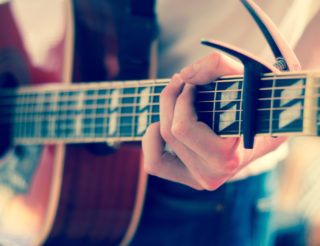
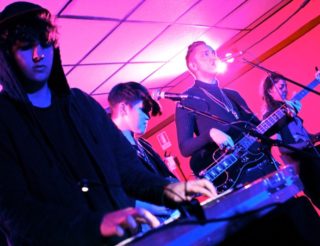
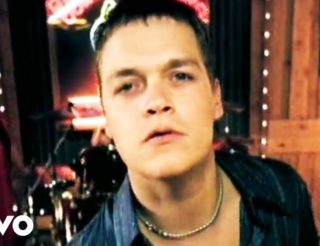


I think this is very helpful…
Thanks, Roderick! It’s great to know we’re helping you. Please let us know if you have any suggestions for topics that might be helpful to you and other guitarists.